26 That’s Right 26 Selections Of The Greatest Circus Movies On Earth!
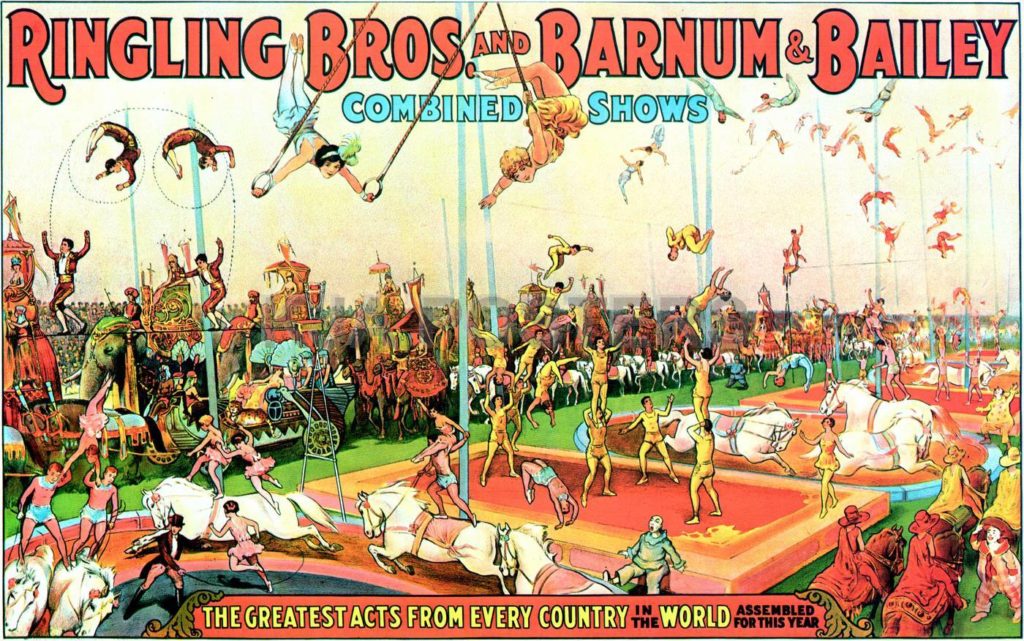
Part I: Performance
Summer’s end brings quiet calm and reflection for this movie-viewer, which frequently belies the actual content of what one happens to view in its waning days. This summer, my binge-viewing happened to pitch, raise, and stake approximately one-half acre of celluloid canvas around the colossal, spectacular, and other adjectives-superlative topic of the circus — courtesy of 26, that’s right, 26 Big Top-themed movies. Only the circus, I felt, could prove worthy of such lofty list-making ambitions! Especially as the outsize subject has regional, familial, and personal significance to this list’s compiler, viewer, and tall-tale teller.
In the last recorded capacity of raconteur, this circus movie marathon’s center-ring attraction will naturally organize itself, one hopes, around the guiding star and performing hero of this list-compiler’s youth: my paternal grandfather, Dean Mory.
Grandpa Dean was born in 1913 in Green Bay, Wisconsin, about 4 hours northeast of the original winter headquarters of the Ringling Brothers Circus in Baraboo. Life’s course would eventually bring him back to Baraboo, when it became the site of the Circus World Museum, a Wisconsin tourist attraction to this day, but the cross-country family journey that led up to his lifelong circus involvement was as unlikely a course as it was storied and adventurous.
When Grandpa was six years old, his father returned from the Great War in France and Germany, having seen dangerous action as a motorcycle scout behind enemy lines, and took the family – including Grandpa’s mother and younger sister – on a decade-long, 8-state, 14-city, and approximately 30-job course up and down the US map during the 1920s. A master carpenter by trade, Grandpa’s Dad was a restless, driven man – possibly affected by his traumatic experiences in the war – who found life in one place confining, and ultimately constricting. The upshot for Grandpa and his sister was that they would often start school on one side of town, move to a different school on the other side of town before the year was over, and then invariably find themselves on the opposite end of the country in a new school, an unfamiliar city, and a different state before the next school year began.
1929 found Grandpa playing halfback his junior year for the football team of Manual Arts High School in Van Nuys, California while his father constructed sets for comedy producer Hal Roach in Culver City. After helping lead the school to a city-wide championship that football season, it was with considerable family friction that Grandpa’s Dad announced the family would be moving back to Wisconsin for a job with a new construction firm in Oconomowoc.
As it turned out, the building company went belly-up before the Morys even arrived back in Wisconsin, and 2 weeks after the new school year began they Model A Ford-trudged 2 hours north to the similarly-named town of Manitowoc – on the shores of Lake Michigan – and the promise of a more stable carpentry position with a vocational school. Grandpa’s senior year at Manitowoc’s Lincoln High School, despite arriving two weeks late, turned out to be the longest he and his sister had ever stayed at one school, and he graduated in the spring of 1931, having played fullback on the football team and having worked as a city-employed lifeguard on the beaches of Lake Michigan.
It was also in the latter capacity that Grandpa one day observed a group of kids raising a tent on the beach and putting on an impromptu performance of juggling, hand-balancing, and sand-kicking acrobatics. This was, as it turned out, Billy Lester’s Circus School, the brain-child of a former Ringling Brothers clown and vaudeville performer named Bill Schultz, who in his retirement had received an educational grant from the same vocational school where Grandpa’s Dad worked to spear-head this extra-curricular, community program for local kids in Manitowoc.
A natural gymnast himself – some of the ways he found to impress other kids at each of the new schools he attended were to flip-flop between the ties down a long length of railroad track, or climb to the top of a tall building and do a hand-stand off the roof – Grandpa gradually became involved with the local circus school to the point where, by the end of the school year, Dean Mory had earned a more circus-appropriate performing nickname on the parallel bars, trapeze, and high-twirling ropes of “Don Moray”.
And thus began my grandpa’s circus years!
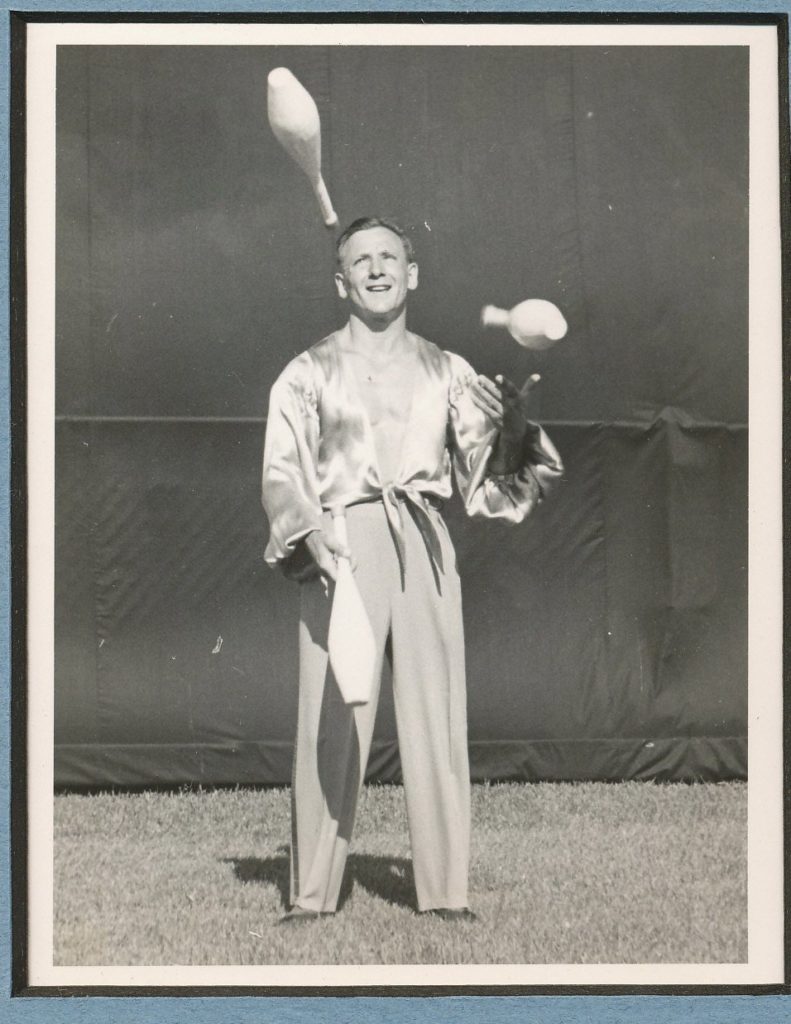
…
“Performance” is the circus theme for our first eight great and near-great Big Top movie selections, which will take us from France, Sweden, and Italy on through the backroads of rural America. Here, there, hither, or yon, a circular, all-points view of physical marvels being performed before a panorama of dropped-jaws and stopped-breaths find its full expression in a ring of sawdust and tinsel!
Trapeze
1956, United Artists, dir. Carol Reed
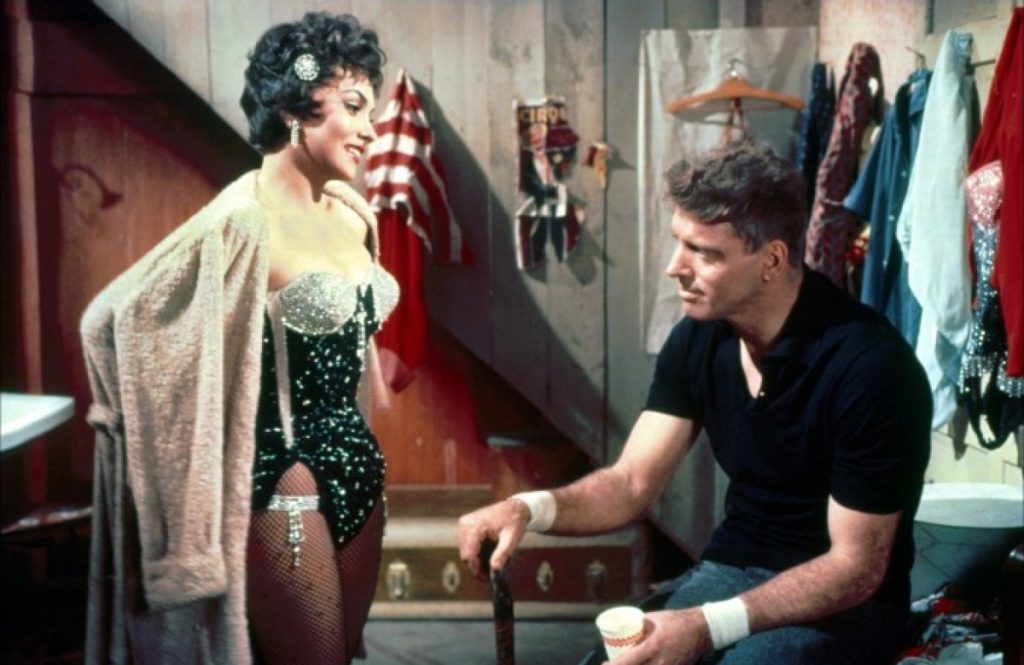
“Trapeze” in dramatic terms seems inseparable from “romantic triangle”, and this colorful mid-50s melodrama, shot in swinging bars-length CinemaScope, offers Burt Lancaster, Tony Curtis, and Gina Lollobrigida as high-flying performing and emotional rivals, all against the lush backdrop of the famed Cirque d’Hiver (“Winter Circus”) in Paris, France. Plot-driven by the trio’s attempt to perform the famed and elusive “triple” – a bar-to-bar triple somersault mid-air – the movie’s main attraction, however, is its attractive stars, and Tony Curtis as the brash and ambitious young “flier” and Lollobrigida as the dazzlingly sequined bar-twirler are both incredibly nice to look at. Despite the screen eye-candy, it’s nonetheless one-time circus performer Burt Lancaster, co-producing this obvious labor of love with his Hecht-Hill-Lancaster production company, who walks – or, more accurately, “flies” – away with the film as a veteran, injured trapeze artist reduced to “catching” and coaching other performers towards future circus glory. As showing the private lives and personal ambitions of performers, Trapeze offers a behind-the-Big Top view of those daring young men (and women) on the flying trapeze.
You Can’t Cheat An Honest Man
1939, Universal Pictures, dir(s). George Marshall & Edward F. Cline
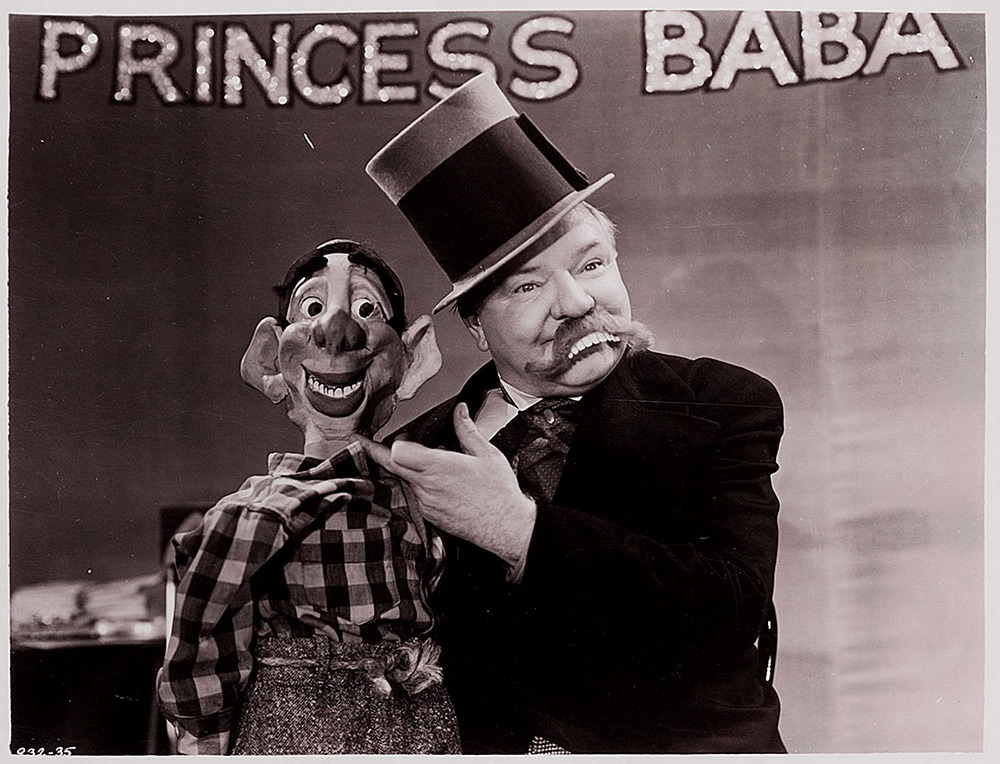
W.C. Fields called himself “The Great Man”, and while very few have disagreed, the varying travails and indignities heaped upon his deservedly undeserving characters have earned the continued sympathy of his multi-generational admirers with each exasperating pronouncement of “Godfrey Daniels!” As Larsen E. Whipsnade, one of Fields’ more transparently hilarious aliases, the constantly performing owner of a constantly failing traveling circus-and-sideshow is forced to contend with rubes who refuse to be fleeced, creditors who refuse to be counterfeited, and ventriloquist’s dummies who refuse to keep their wooden yaps shut when their milquetoast interlocutor isn’t paid. Never has a Big Top impresario had to contend with such ingratitude for bringing romance, thrills, and marvels into the gray little lives of so many suckers – I mean, circus-goers! Edgar Bergen and Charlie McCarthy’s famed radio battles with the tomato-nosed comedian spill over onto the big screen and gift this ridiculously entertaining circus saga with just the right core of unapologetic nastiness which, as with the best of W.C., beats any hint of sentiment into (rightful) screen submission.
At The Circus
1939, MGM, dir. Edward Buzzell
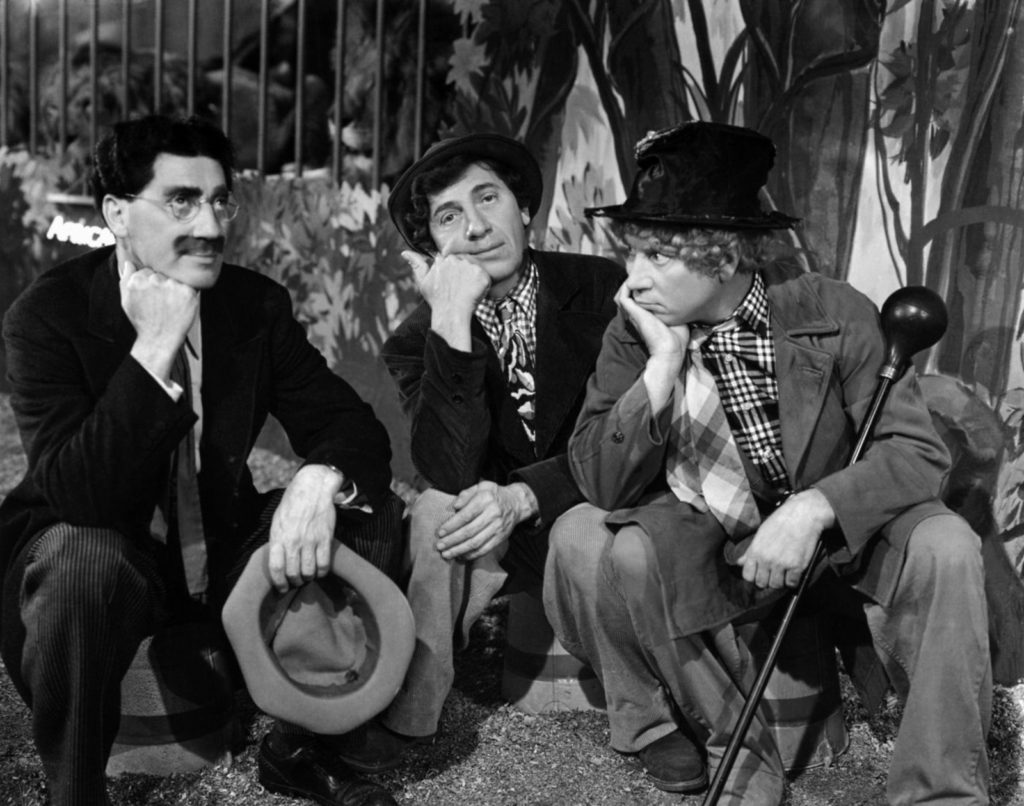
Big Top mayhem finds its natural progression to the Marx Brothers and their continued comic-anarchist mockery of high society, culture, and pretensions courtesy of low entertainment and performance. And while a far cry from their best moments in Duck Soup (1933) or A Night at the Opera (1935), At the Circus as later Marxist fare provides the brothers with enough flim-flammery to engage Chico through multiple groan-inducing malapropisms, enough exuberance to see Harpo through various energetic sight gags, and enough verbal angles to keep Groucho awake through his usual volley of sharp-tongued insults. And while the energy levels occasionally lag behind studio-mandated, edge-softening elements – such as popular radio tenor Kenny Baker’s uneasy fit into the romantic Zeppo role – the brothers’ frantic efforts to save a failing circus do allow them one of their greatest screen gags: in which they somehow gather an 80-piece orchestra onto a monstrous barge and, in the film’s final moments, cut its moorings to let the diminishing strains of Wagner’s Lohengrin loose upon the open seas. Besides offering all sorts of circus trappings for the boys to similarly let loose with – including an upside-down encounter for all three brothers with trapeze artist Eve Arden on the ceiling of her dressing room – At the Circus also gave Groucho one of his best later-life talkshow anecdotes regarding the unaccountably diminishing size of a gorilla suit – and its gradually shrinking inhabitant(s) – during the film’s production.
3 Ring Circus
1954, Paramount Pictures, dir. Joseph Pevney

Martin and Lewis serve up 3 ring chuckles and Big Top guffaws in their 12th screen outing, with perpetually 9-year-old Jerry a hopeful and antic apprentice clown, over-earnest and always eager-to-please, opposite big brother-ish Dean, a perpetually unconcerned, ambition-less, and cooler-than-cool crooner on the romantic and financial make. Like a cookie wafer topped with whipped cream, M&L go down just as vanilla shake-smooth for modern-day audiences as they did back in their ’50s heyday, and 3 Ring Circus is one of their breeziest, most enjoyable efforts. And like many of the pair’s better “themed” features (their later comic book-themed Artists and Models [1955] and entertainment-themed Hollywood or Bust! [’56] spring to mind), 3 Ring Circus is mainly unconcerned with its “plot”, as such; rather concerning itself with the day-to-day doings of the circus performers and the comic situations that arise from, say, tending an obstreperous elephant, hawking sundaes on the midway, or dealing with the outsize ego of an over-the-hill clown (the last being sadly prophetic for the late Jerry Lewis). Long unavailable on home video, 3 Ring Circus is well worth seeking out: such being my commitment to movie-watching in general and this circus movie list in particular that I ended up watching it on YouTube with Turkish subtitles!
Yoyo
1965, France, dir. Pierre Etaix

A performer of many talents and interests – including clown and visual artist – French filmmaker Pierre Etaix made a handful of lovingly-constructed film comedies in the 1960s that went largely unseen past their initial theatrical runs until rescued from various legal complications by a spectacular DVD/Blu-ray box-set release from the Criterion Collection in 2013. Bearing an uncanny resemblance to silent film comedian Buster Keaton, Etaix’s similar slapstick sensibility found its gently poetic and subtly gag-driven expression, much like that of fellow French filmmaker and comedian Jacques Tati (with whom Etaix apprenticed as designer and illustrator for 1955’s Mon Oncle), in a purely cinematic and observational comedy style. 1965’s Yoyo, a multi-generational family saga of love lost, love found; success, failure, and success again; spans four decades of entertainment history around the inexorable life-, love-, and family-gathering draw of the Big Top. From its full half-hour silent prologue, set in the late 1920s, Yoyo is full of unexpected moments of comic poignancy perfectly complemented by its glowing black-and-white imagery. A 1960s arthouse film as directed by, say, Emmett Kelly, rarely has a clown’s life been cinematically treated with such depth, sensitivity, and ingenious hilarity. Yoyo is a delicate comic saga showing a side of the circus rarely seen by its spectators: a spot-lit illumination on the tender-beating smile of its grease paint-covered heart.
I Clowns
1970, Italy, dir. Federico Fellini
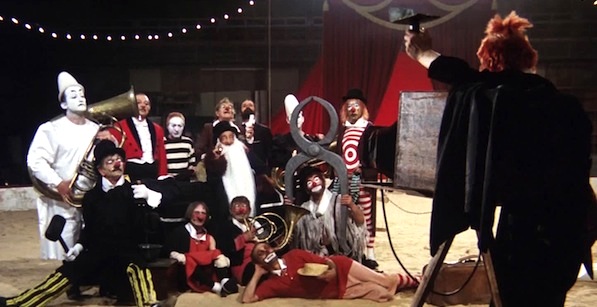
Translated, simply, as “The Clowns”, Federico Fellini’s 1970 TV “documentary” uses behind-the-cameras reportage, staged interviews, and filmed re-enactments to reshape history, reminiscence, and, at times, reality itself towards the Italian master director’s lifelong obsession with the circus. The traveling carnival performers of La Strada (1954), the happy-sad Rome prostitute Cabiria (1957), the untamed celebrity world of La Dolce Vita (1959), and finally the feverish autobiographical Big Top fantasies of 8 ½ (1963) and Juliet of the Spirits (1965) finds the logical culmination of Fellini’s career-long “life as a circus” theme in this 92-minute delineation of all humanity into either the authoritatively stately “white clown” or the childishly rebellious “Augusto”. Featuring appearances from Pierre Etaix, Anita Ekberg, and Charlie Chaplin’s clown-performing daughter Victoria, Fellini himself “intrudes” into the narrative of his subject matter; an oddly persistent yet vaguely detached participant in his own circus reveries. Coaxing then elderly clowns and long-retired ex-clowns into re-living their great circus heydays, the mood is one of elegy for a performing Golden Age only accessible by old photo albums, yellowed splash posters, and memories not long for this world. From the Fratellini Brothers who performed free of charge in prisons and mental asylums to an enfeebled octogenarian who dreams of opening a school to continue the circus tradition, the film concludes with the now rarely-performed “death of a clown”, where a mock-funeral in a mock-documentary about mock-performers seems a fitting way to draw a final curtain around the center ring; the long and epic performance battle between Augusto and White Clown ending in a poetic draw.
Parade
1974, France/Sweden, dir. Jacques Tati
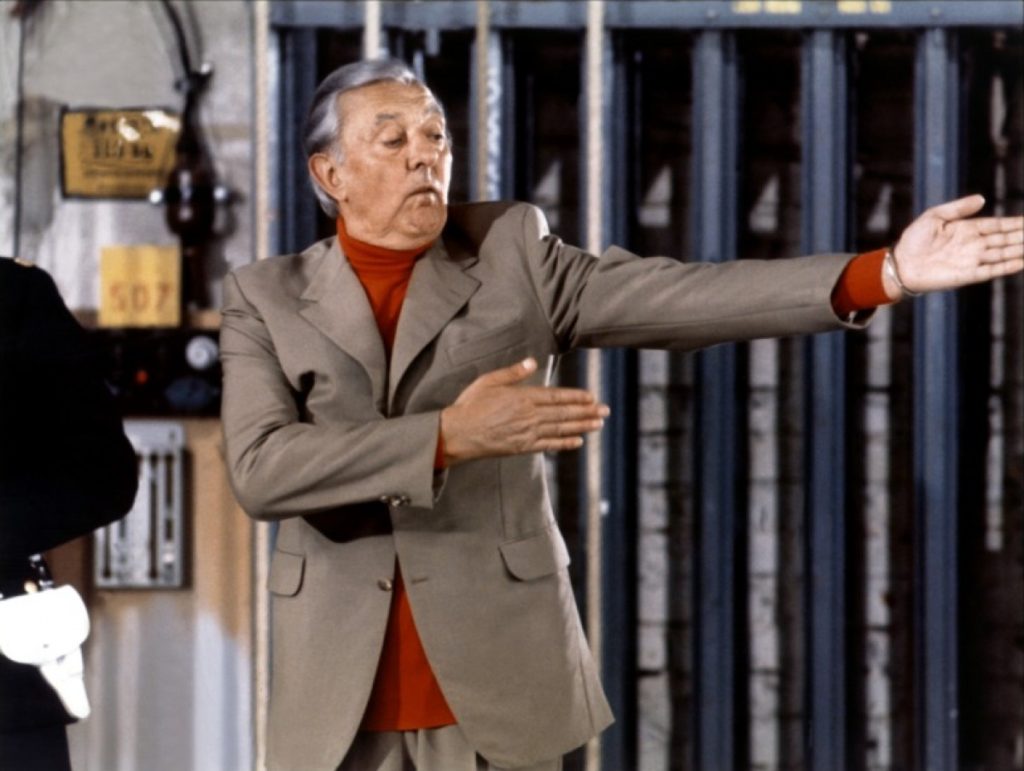
Like Fellini’s I Clowns, Parade was produced for European television as a stage- and spectator-bound “documentary” and similarly evokes a bygone era of performance and spectacle. Unlike I Clowns, however, we are in the comparatively tender cinematic company of one-time mime, cabaret performer, and film director Jacques Tati, who in a mere handful of films, made between the late ’40s and the early ’70s, created an entire life-affirming comic universe that was as gently unassuming as it was subtly incisive. Bringing those considerable gifts to bear on a magical evening with the circus, Tati the performer bids farewell to the virtuosic mimed sports-themed routines – uproarious one-man boxing, tennis, and football (European) bouts – that made him internationally famous during the early 1930s; even as Tati the filmmaker bids farewell to the medium he mastered, in what turned out to be his final film. With Parade, the generous spirit of the comedian who created M. Hulot is on warm display with every performing set piece: the show’s head-lining star and ring-master gradually sinking into the background in order to share the limelight with hopeful young jugglers, acrobats, magicians, and musical comedians – further encouraging increasing audience participation with each stage-and-stands blurring act. Fully aware of the irony of a film celebrating live performance being made for and shown on television, Tati’s recreation of the elder days of thrills and laughter reminds us of what we have lost in our fruitless search for more “sophisticated”, and consequently less genuine, forms of entertainment.
The Circus
1928, United Artists, dir. Charlie Chaplin
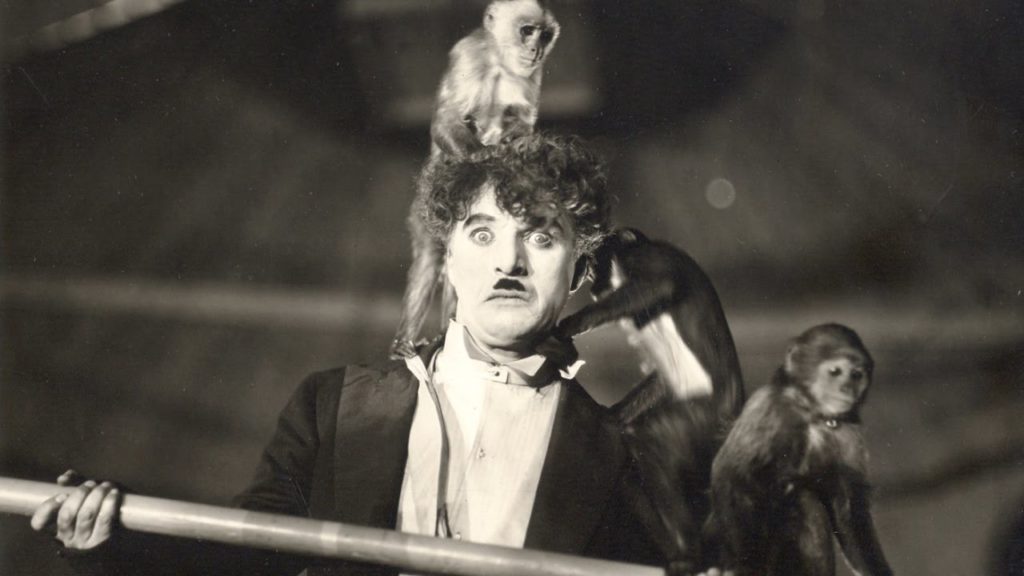
World cinema’s first great clown took a detour from his usual comic purview of the lonely road of life to finally join a circus. Belying its famously troubled, year-long production, which survived a devastating fire, a scandalous divorce, and a major tax lien, Charlie Chaplin’s The Circus arrived on screens in January 1928 to near-unanimous praise and the biggest box office receipts of his career, later earning the performer, producer, writer, and director an honorary Oscar for his “unique achievements in the field of motion pictures” at the first Academy Awards ceremony in 1929. Oddly overshadowed today by earlier and later Chaplin classics like The Kid (1921), The Gold Rush (1924), City Lights (1931), and Modern Times (1936), Chaplin’s cinematic statement on The Circus nonetheless remains definitive for this circus-enthusiast viewer, capturing that indefinable popcorn-and-peanuts mixture of laughter and tears in the Little Tramp’s ambling duck-walk across the circus midway. A flawlessly constructed comedy, The Circus also features some of Chaplin’s best-known comic sequences, including a frantic chase through a funhouse of mirrors, a hair-raising lock-in with a caged lion, and the Tramp perilously balancing on a tight-rope while a howl of escaped monkeys clamber mercilessly over him. A failure in the Big Top, as well as in love and in life, the haunting final scene nonetheless finds the Tramp shaking off his troubles and enthusiastically waddling off towards his next adventure. A performer may fall, Chaplin seems to say, but he can always get back up. Would that it were that easy for us non-performers!

